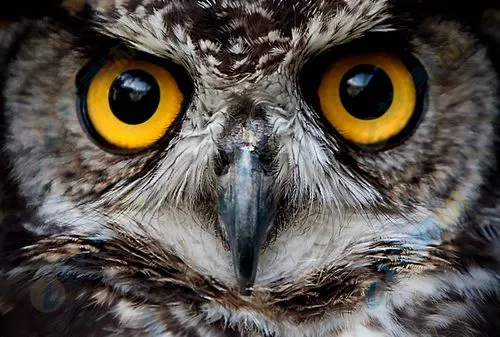An ornithologist once put an owl in a completely black room and used infrared photography equipment to observe its mousetraps.
The experimental site was very cleverly arranged and the indoor floor was sprinkled with wood chips, and several small speakers were hidden under the wood chips.
As soon as the experiment began, as soon as one of the loudspeakers made a mouse-like cry, the owl swooped over and grabbed the speakers exactly, no different from the fact that it didn't catch mice in its natural environment.
So why do owls have such excellent hunting skills?
As a bird of prey that preys at night, the owl's eye structure is special. On the retina of the owl, cone cells and rod cells are distributed.
Cone cells primarily perceive color, while rod cells sense light. Compared with ordinary animals, owls have particularly many rod cells and very few cone cells.
In addition, there is a film layer at the back of the pupil of the eye that reflects light, so that light can pass through the pupil again, greatly enhancing low-light vision at night. So, even in the dark of night when it can't see its five fingers, it can still clearly see everything that the human eye can't see, and it can freely carry out predatory activities.
To be a great "catcher of the night". First-class vision alone is not enough, you must also have exceptionally sensitive hearing. The owl's hearing is very sensitive, and in the dark environment where five fingers are out of sight, its hearing plays a major role in localization.
The owl has a large head, which makes the distance between the ears farther, which can enhance its resolution of sound waves. The left and right ears of the owl are asymmetrical, the left ear canal is significantly wider than the right ear canal, and the left ear has a well-developed ear drum.
In addition, the owl's face is densely packed with hard feathers, which is an excellent sonic collector that helps it accurately determine the location of its prey.
Once the orientation of the prey is determined, the owl immediately makes a decision and strikes quickly. Because the owl's feathers are very soft, and there are velvety feathers on the feathers of the wings, the frequency of the sound waves it produces when it flies is very small, and the ears of the general mammals cannot feel it, which makes the owl's attack silent.
Even if the prey is alert and moves, the owl can still adjust the direction of the attack according to the sound generated by the prey as it moves, and finally pull out its claws, which works in one fell swoop.
